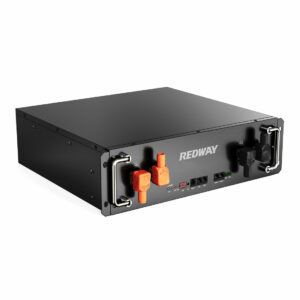Can I use a 2000W inverter with a 100Ah battery?
Using a 2000W inverter with a 100Ah battery is theoretically possible but requires strict voltage compatibility and load management. A 12V 100Ah battery stores 1.2kWh (12V × 100Ah), which can theoretically power a 2000W load for ~36 minutes at 90% inverter efficiency. However, sustained 2000W draws demand ~167A from a 12V system, exceeding most lead-acid batteries’ 100A continuous discharge limits, risking voltage sag or damage. Lithium (LiFePO4) batteries handle higher currents but still require proper BMS and cooling. Always match inverter voltage to the battery bank (e.g., 48V systems reduce current to ~42A for 2000W).
What factors determine inverter-battery compatibility?
Voltage alignment and current limits are critical. A 12V 2000W inverter requires 167A, but most 100Ah lead-acid batteries max out at 100A. Mismatched voltages (e.g., 48V battery with 12V inverter) necessitate DC-DC converters, adding inefficiency. Pro Tip: Use a 48V battery system to halve current demands—2000W at 48V pulls only 42A, well within 100Ah LiFePO4 capabilities.

Beyond basic voltage math, battery chemistry dictates performance. Lead-acid batteries suffer voltage drop under high loads, reducing effective capacity by 20–30%. For example, a 12V 100Ah AGM battery running a 1500W microwave might only deliver 800Wh instead of 1,200Wh due to Peukert’s effect. Lithium iron phosphate (LiFePO4) batteries maintain stable voltage even at 1C discharge rates (100A for 100Ah), making them better suited for high-power inverters. But what happens if you ignore current limits? Continuous overcurrent triggers BMS shutdowns in lithium packs or accelerates plate corrosion in lead-acid units. Transitioning to higher voltage systems (24V or 48V) is the safest path for 2000W+ loads.
How long can a 100Ah battery run a 2000W inverter?
Runtime depends on load percentage and battery efficiency. At full 2000W load, a 12V 100Ah lithium battery lasts ~0.5 hours (1.2kWh ÷ 2000W × 0.9 efficiency). For 500W loads, runtime extends to ~2 hours. Pro Tip: Derate lead-acid batteries by 40%—a 100Ah AGM provides only 720Wh usable energy (1.2kWh × 0.6) due to depth-of-discharge and Peukert losses.
Practically speaking, real-world usage rarely involves full-load operation. A 2000W inverter powering intermittent loads like refrigerators (150W) or power tools (1,000W bursts) could last 4–8 hours. However, sustained high draws—like running a 1,800W air conditioner—will drain even lithium batteries in under an hour. Let’s break it down: A 48V 100Ah LiFePO4 pack holds 4.8kWh. Running a 1,000W load with 90% inverter efficiency consumes 1,111W per hour (1,000 ÷ 0.9), yielding ~4.3 hours runtime. Always size batteries for 20% longer than calculated to account for aging and voltage drop.
| Battery Type | Usable Energy (100Ah) | 2000W Runtime |
|---|---|---|
| Lead-Acid (12V) | 720Wh | ~22 minutes |
| LiFePO4 (12V) | 1,080Wh | ~33 minutes |
| LiFePO4 (48V) | 4,320Wh | ~2.3 hours |
RackBattery Expert Insight
FAQs
Can I connect multiple 100Ah batteries for a 2000W inverter?
Yes, but wire them correctly. For 12V systems, parallel connections increase capacity (e.g., 2×100Ah = 200Ah), while series connections boost voltage (24V or 48V). Use 48V in series for 2000W to keep currents below 50A.
Will a 2000W inverter kill my car battery?
Absolutely. Car batteries aren’t designed for deep cycles—even 10 minutes at 2000W (167A) can permanently damage a 60Ah automotive lead-acid battery.



